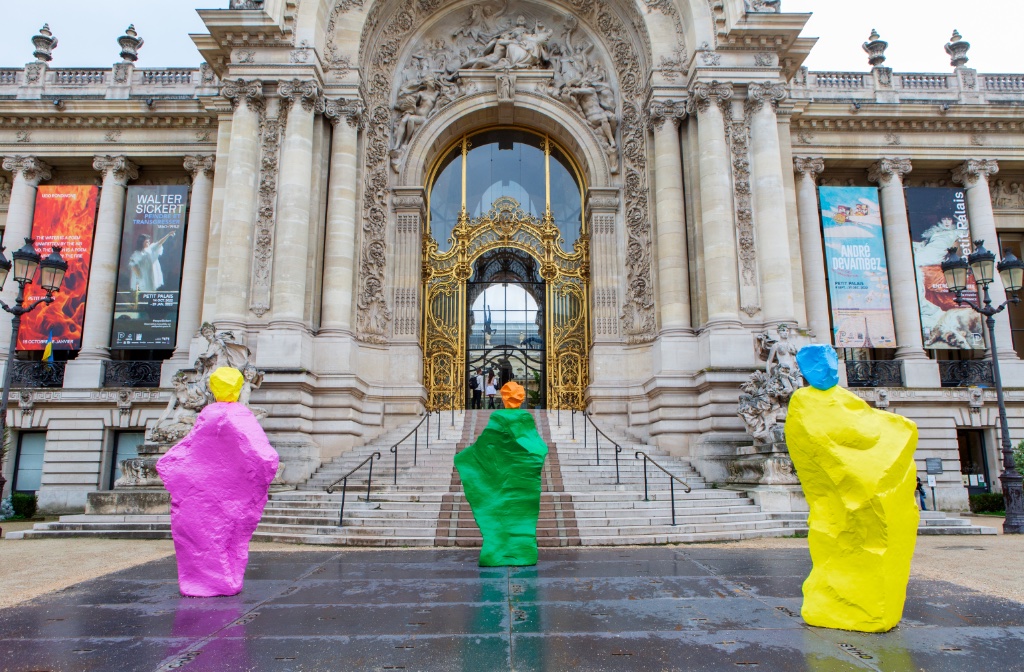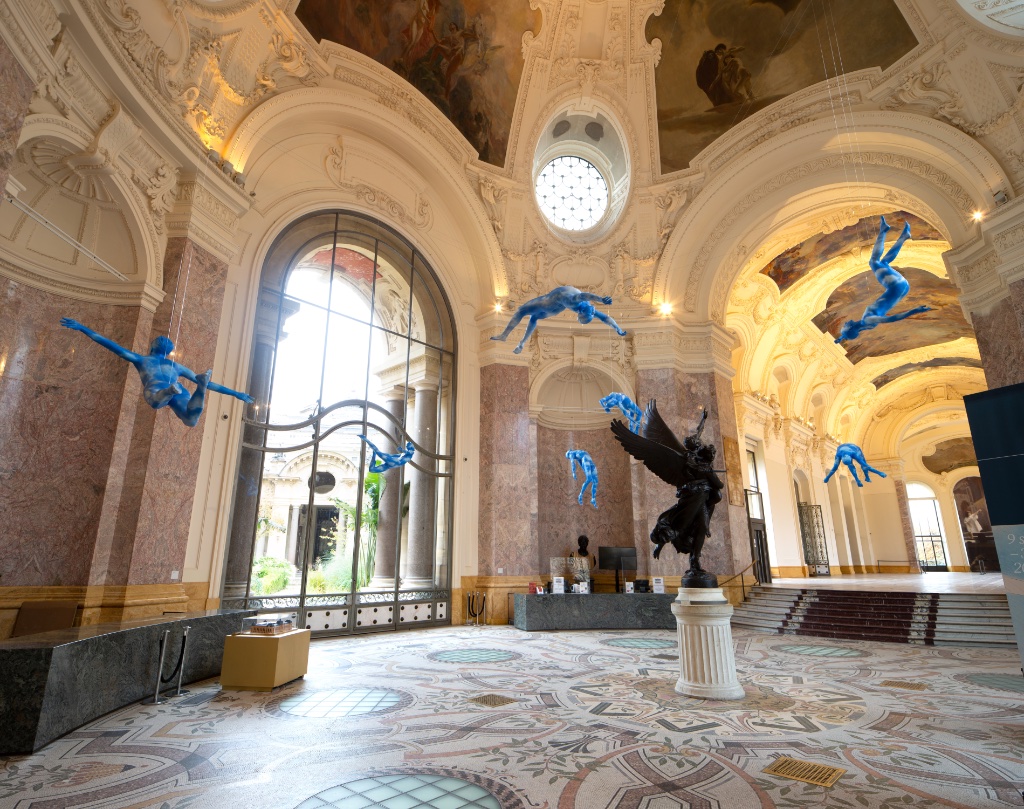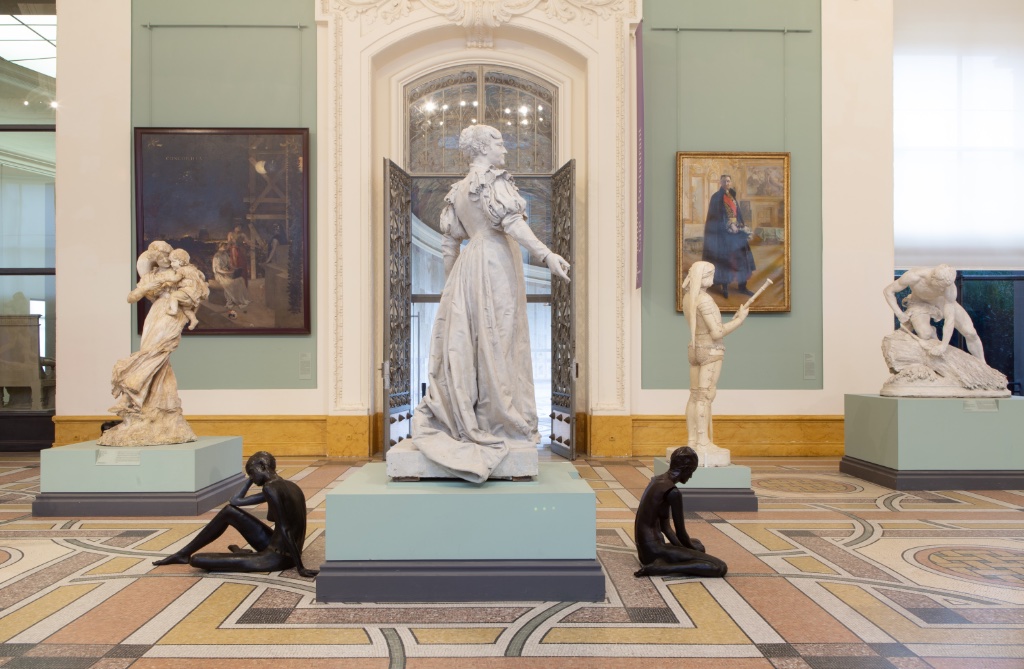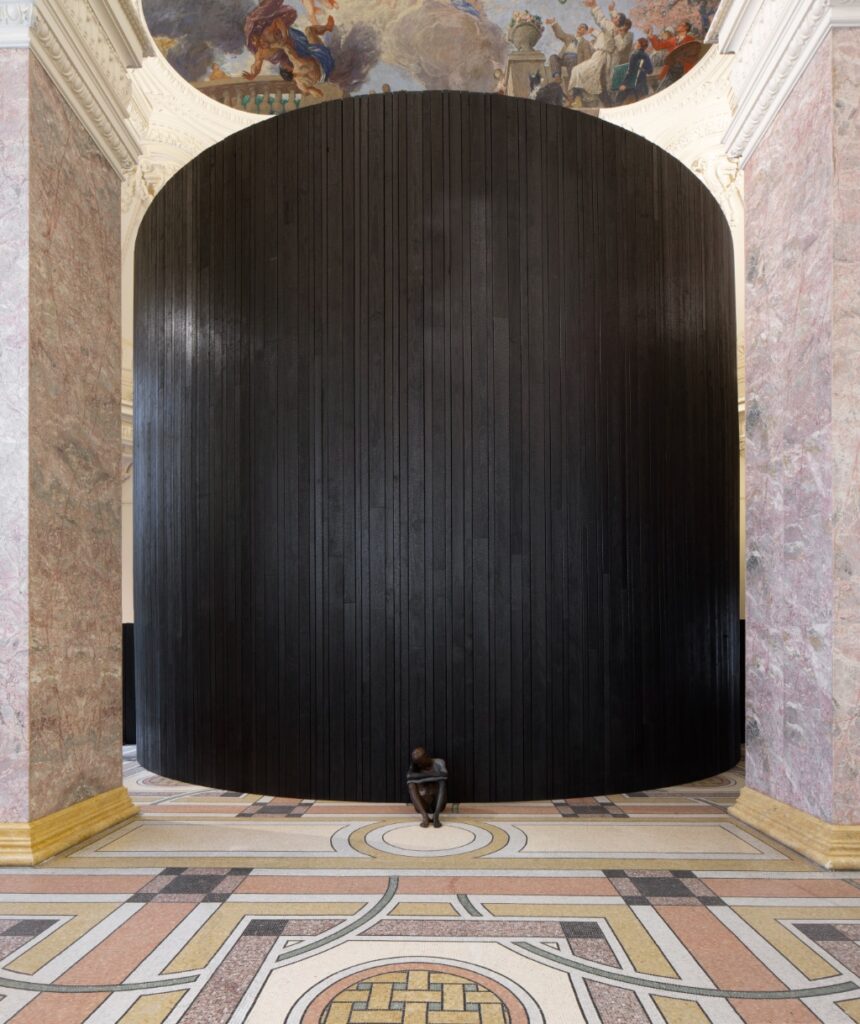
Just in time for Art Basel, the new contemporary art fair that has replaced FIAC, the Petit Palais has opened an exhibition of the work of one of today’s leading contemporary artists, Ugo Rondinone. The show’s lowercased title, “the water is a poem unwritten by the air no. the earth is a poem unwritten by the fire” – a quotation from a poem by John Giorno, Rondinone’s partner until the latter’s death in 2019 – alerts us to the importance of the four elements in the exhibition.
The New York-based Swiss artist, who works in every artistic medium imaginable, from landscape art to sculpture to film, has enlivened the normally staid Petit Palais by distributing some of his works outside the museum and inside among its permanent collection.
The approach to the beautiful Belle Époque museum is brightened by three enigmatic bronze statues painted in vivid colors: “blue yellow nun” (2020), “orange green nun” (2022) and “yellow pink monk” (2020). On reflection, these larger-than-life human figures with massive bodies could be not only religious figures draped in their robes but dancers whose movements are cloaked by enveloping fabric.

That interpretation fits well with the dance theme we find inside. In the museum’s rotunda, “Humansky” (2022), realistic naked human figures painted sky-blue and cloud-white, are suspended from the ceiling and fly in trapeze dancers’ poses above the heads of visitors and the winged figure of the 19th-century statue “Gloria Victis” by Antonin Mercié.

To the left, in the sculpture gallery, are more human figures in static poses but in a very different way from the figures outdoors. Called “Nude,” with varying numbers of X’s in parentheses after the title of each, these dark-colored sculptures dating from 2010-11 sit here and there on the floor among the gallery’s 19th-century sculptures. They represent dancers at rest after a workout and seem to be not only exhausted by their efforts but also in a contemplative state or maybe in despair. Made of wax and earth collected from all the continents, the artist describes their bodies as “vessels that contain the natural world of earth.”

At the end of the gallery is a huge black structure that smells faintly of smoke. Inside this purpose-built cylinder made of burnt wood is the show’s pièce de résistance, a six-screen video installation called “burn to shine” (2022). In this hypnotic film, a group of near-naked dancers gyrates around a fire under the full moon in the desert, gradually building to a frenzy to the beat of the drums and interacting with each other’s bodies and with the earth beneath their feet. You’ll feel the heat of the fire and the dust of the desert as you watch this mesmerizing combination of traditional Moroccan trance dance and contemporary dance, choreographed by Fouad Boussouf. It ends with the rising sun.
The inspiration for this video was another poem by Giorno, “You Got to Burn to Shine,” inspired by a Buddhist proverb. Rondinone relates it to the mythical phoenix, “the immortal bird that regenerates cyclically or is reborn in a different way. Associated with the sun, the phoenix receives new life by resurrecting from the ashes of its predecessor.”
Salvation through dancing with the elements? Good idea.
See our list of Current & Upcoming Exhibitions to find out what else is happening in the Paris art world.
Favorite